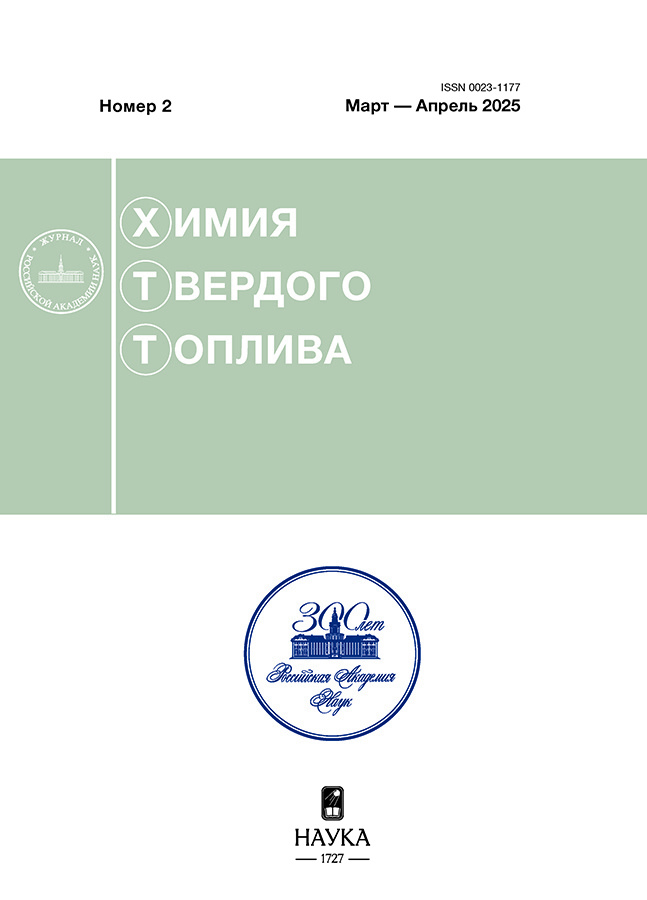Leaching ability of strategically important elements from middle-miocene coals ash of the sergeevskoye brown coal deposit (priamurie)
- Authors: Radomskaya V.I.1, Shumilova L.P.1, Sorokin A.P.1, Soktoev B.R.2, Ivanov V.V.3, Pavlova L.M.1
-
Affiliations:
- Institute of Geology and Natural Management of Far Eastern Branch of Russian Academy of Sciences (IGNM FEB RAS)
- National Research Tomsk Polytechnic University
- Far East Geological Institute, Far East Branch, Russian Academy of Sciences (FEGI FEB RAS)
- Issue: No 2 (2025)
- Pages: 75-90
- Section: Articles
- URL: https://rjsocmed.com/0023-1177/article/view/687492
- DOI: https://doi.org/10.31857/S0023117725020085
- EDN: https://elibrary.ru/KOKSRC
- ID: 687492
Cite item
Abstract
Using a set of analytical methods, the mineralogy and behavior of strategically valuable elements during their leaching from coal ash from the Sergeevskoye deposit were studied under different conditions of a laboratory experiment. The use of a sequential three-stage leaching scheme (water–alkali–acid) caused a significant (up to 97%) decrease in the concentration of most elements in the ash residue. It was found that the bulk of rare earth elements in the ash are present in the form of oxides that are readily soluble in acid; non-leachable rare earth elements are in the form of phosphate minerals similar in composition to monazite and xenotime. The maximum (70–100%) extraction of most strategically valuable elements occurs with a single-stage treatment of ash with concentrated hydrochloric acid (4.8 M) for an hour at 75°C.
Full Text
About the authors
V. I. Radomskaya
Institute of Geology and Natural Management of Far Eastern Branch of Russian Academy of Sciences (IGNM FEB RAS)
Author for correspondence.
Email: radomskaya@ascnet.ru
Russian Federation, Blagoveshchensk
L. P. Shumilova
Institute of Geology and Natural Management of Far Eastern Branch of Russian Academy of Sciences (IGNM FEB RAS)
Email: shumilova.85@mail.ru
Russian Federation, Blagoveshchensk
A. P. Sorokin
Institute of Geology and Natural Management of Far Eastern Branch of Russian Academy of Sciences (IGNM FEB RAS)
Email: sorokinap@ignm.ru
Russian Federation, Blagoveshchensk
B. R. Soktoev
National Research Tomsk Polytechnic University
Email: bulatsoktoev@tpu.ru
Russian Federation, Tomsk
V. V. Ivanov
Far East Geological Institute, Far East Branch, Russian Academy of Sciences (FEGI FEB RAS)
Email: d159327@yandex.ru
Russian Federation, Vladivostok
L. M. Pavlova
Institute of Geology and Natural Management of Far Eastern Branch of Russian Academy of Sciences (IGNM FEB RAS)
Email: pav@ascnet.ru
Russian Federation, Blagoveshchensk
References
- Вялов В.И., Наставкин А.В. // ХТТ. 2019. № 5. С. 63. https://doi.org/10.1134/S0023117719050116
- Арбузов С.И., Чекрыжов И.Ю., Тарасенко И.А. // Вестник Дальневосточного отделения Российской академии наук. 2023. № 5. С. 31. https://doi.org/10.37102/0869-7698_2023_231_05_3
- Салганский Е.А., Цветков М.В., Кадиев Х.М., Висалиев М.Я., Зекель Л.А. // Журнал прикладной химии. 2019. Т. 92. Вып. 12. С. 1514. https://doi.org/10.1134/S0044461819120028
- Сорокин А.П., Конюшок А.А. // ДАН. 2018. Т. 483. № 6. С. 658. https://doi.org/10.31857/S086956520003452-0 [Doklady Earth Sciences. 2018. V. 483. No. 2. P. 1571. https://doi.org/10.1134/S1028334X18120218]
- Сорокин А.П., Конюшок А.А., Кузьминых В.М., Артеменко Т.В., Попов А.А. // Геотектоника. 2019. № 2. С. 33. https://doi.org/10.31857/S0016-853X2019233-45 [Geotectonics. 2019. V. 53. No. 2. P. 193. https://doi.org/10.1134/S0016852119020092]
- Радомская В.И., Шумилова Л.П., Носкова Л.П. и др. // ХТТ. 2023. № 1. С. 32. https://doi.org/10.31857/S0023117723010061 [Solid Fuel Chemistry. 2022. V. 56. No. 1. P. 20. https://doi.org/10.3103/S0361521923010068]
- Радомская В.И., Шумилова Л.П., Носкова Л.П. и др. // ДАН. 2022. Т. 507. № 2. С. 59. https://doi.org/10.31857/S2686739722601776 [Doklady Earth Sciences. 2022. V. 507. No. 2. P. 1032. https://doi.org/10.1134/S1028334X2260103113]
- Zhang W., Honaker R. // Fuel. 2019. V. 249. Р. 130. https://doi.org/10.1016/j.fuel.2019.03.063
- Макарова И.А., Лохова И.А. Физико-химические методы исследования строительных материалов. Братск: Изд-во БрГУ, 2011. 139 с.
- Ketris M.P., Yudovich Ya.E. // Intern. J. Coal Geology. 2009. V. 78. P. 135.
- Rudnick R.L., Gao S. Composition of the Continental Crust. Treatise on Geochemistry. 2014. P. 1. https://doi.org/10.1016/b978-0-08-09597
- Seredin V.V., Dai S. // Intern. J. Coal Geology. 2012. V. 94. P. 67–93. https://doi.org/10.1016/j.coal.2011.11.001
- Сорокин А.П., Агеев О.А., Дугин С.В., Попов А.А. // ХТТ. 2023. № 1. С. 13. https://doi.org/10.31857/S0023117723010097
- De Benedetto G., Laviano R., Sabbatini L., Zambonin P. // J. Cult. Herit. 2002. V. 3. P. 177–186. https://doi.org/10.1016/S1296-2074(02)01178-0
- Zhang W., Noble A., Yang X., Honaker R.A // Minerals. 2020. V. 10. P. 451. https://doi.org/10.3390/min10050451
- Yang R., Das S., Tsai B. // Fuel. V. 64. No. 6. P. 735. https://doi.org/10.1016/0016-2361(85)90002-x
- Sharma D.K., Gihar S. // Fuel. 1991. V. 70. P. 663.
- Баррер Р. Гидротермальная химия цеолитов. М.: Мир, 1985. 424 с.
- Чукин Г.Д. Химия поверхности и строение дисперсного кремнезема. М.: Типография Паладин. ООО “Принта”, 2008. 172 с.
Supplementary files

















